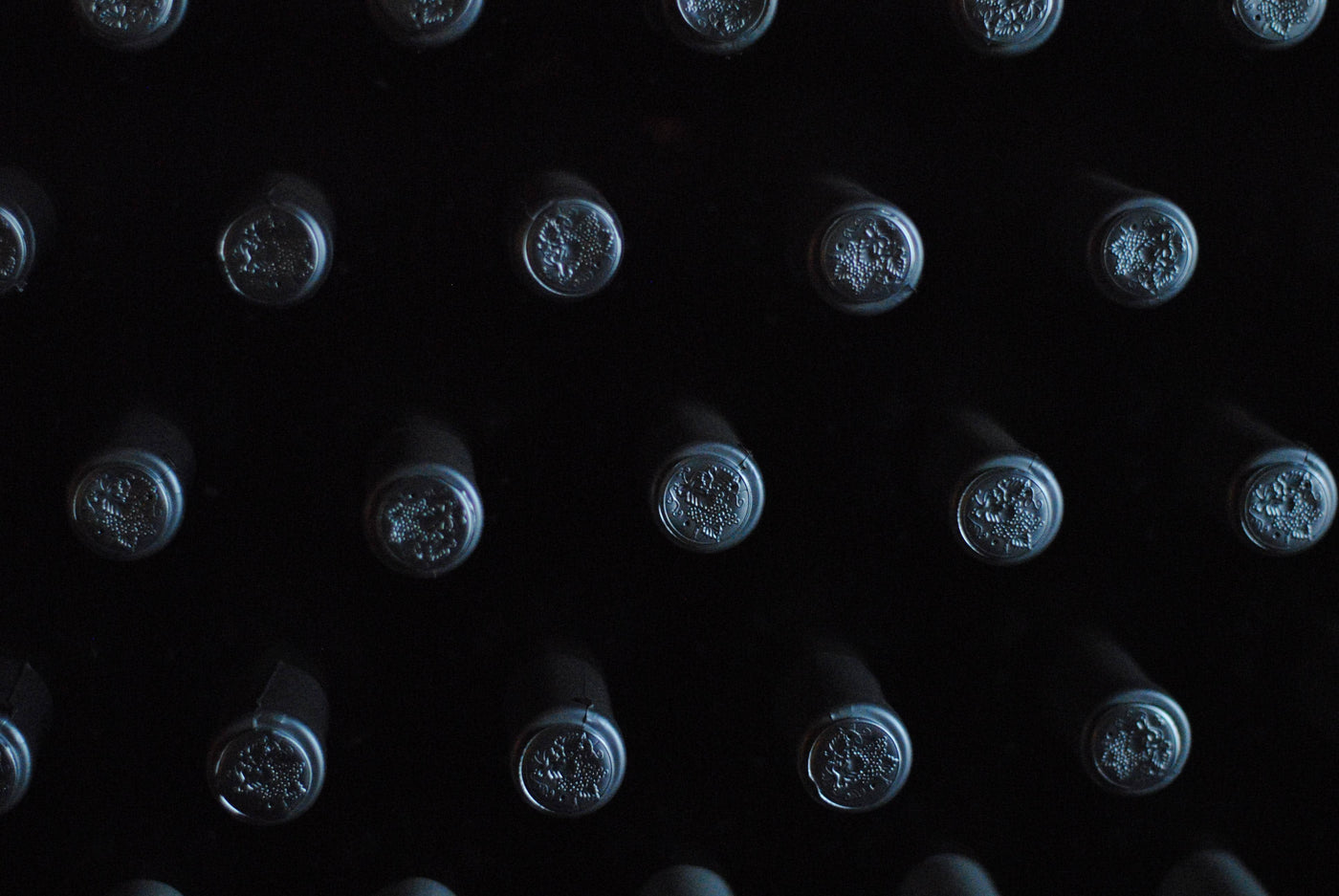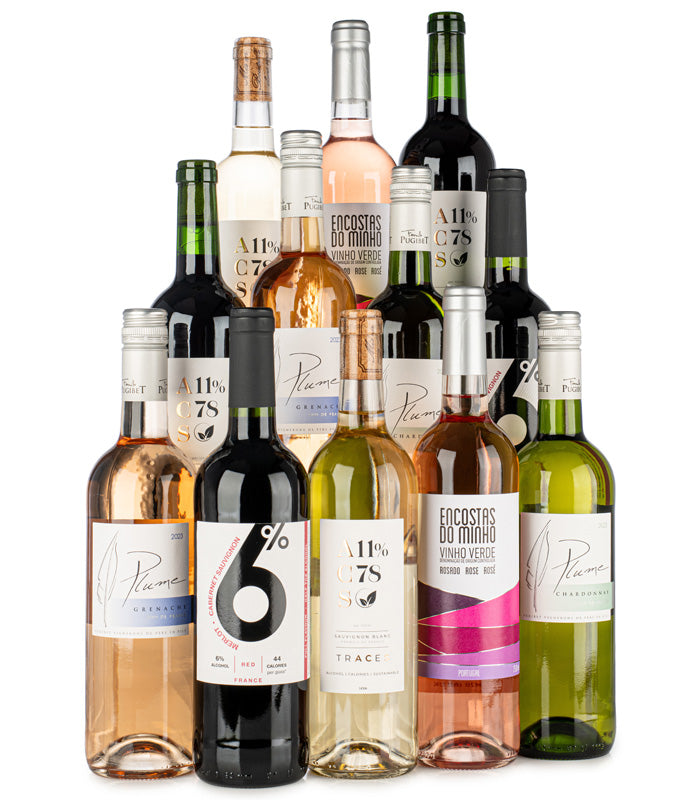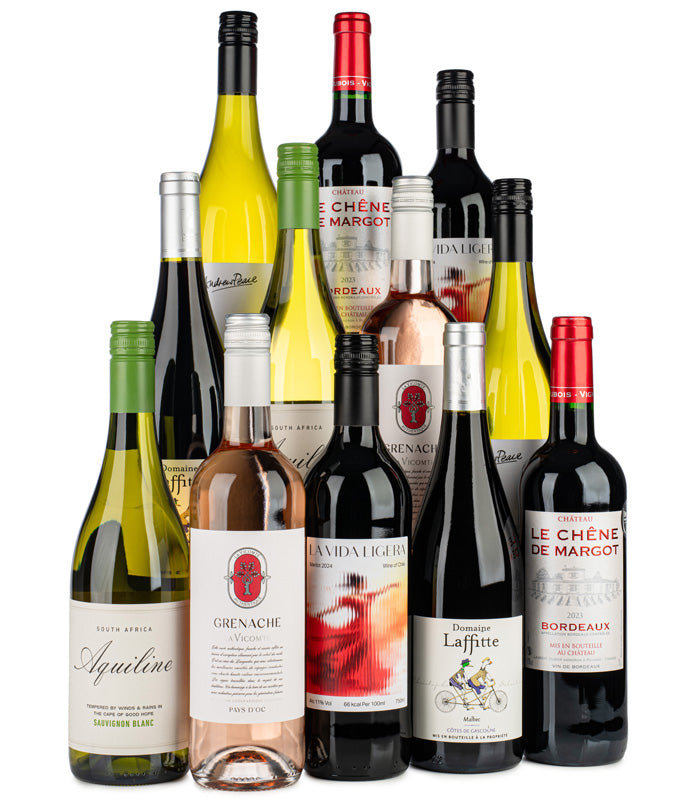Browse Related Products
Laboratory Research From DrinkWell Highlights Industry Misinformation

ZERO SUGAR WINE
ZERO SUGAR WINE
SHOP BY WINE TYPE
SHOP PRE-MIXED CASES
SHOP BY DIETARY REQUIREMENT


LOW CARB BEER

DrinkWell have conducted independent laboratory research analysing the calorie content of 24 of the most popular supermarket wines. We were shocked by the findings.
Not only did our research highlight the levels of sugar used in some mass produced wines, but it also highlighted how additives used in their production can add up to 25% more calories into the mix.
We’ve summarised our findings below along with information on how we conducted the research. We’ve also got the most comprehensive and accurate list of nutritional information available on the internet for many of the most popular supermarket wines.
About Carbohydrates and Sugars in Wine
Sugar is a carbohydrate.
If a wine is made how it should, in the clean way, without any additives, the only carbohydrate content in wine should be from residual sugar. There should be no additional carbohydrates. For example, a clean glass of wine that contains 0.5g of sugar, should only contain 0.5g of carbohydrate.
That means that the only calories in wine should be from the residual sugar and from the alcohol itself, which has its own calorie content.
What our research highlighted is the role that additives can play in the amount of carbohydrates and calories in wine. We found that additives used in wine making can increase the calorie content by up to 25%.
The most shocking thing about these findings is that no one in the industry reports this and maybe, no one in the industry is aware of this. This includes both wine manufacturers and industry bodies such as Drinkaware.
Calories In Red Wines
Our calorie research analysed eight of the most popular red wines commonly bought by consumers in the supermarkets. These included popular varieties, including Yellowtail Jammy Red Roo and Blossom Hill Reserve Merlot.
We found that the calories were generally around 10 - 20% more than DrinkWell wines. Some of these wines had a high sugar content, including Jammy Red Roo, which contained 3.8 grams per glass.
What was surprising was that many of these wines had an additional carbohydrate content caused by the additives that are used in their production. This also meant their calorie content was also dramatically affected.
Product Name
Abv%
Calories Per 125ml
Carbs Per Litre
Sugar Per Litre
Yellow Tail Jammy Red Roo
12.0%
114
54
38
Lindemans Bin 40 Merlot,
14.0%
110
27
9
Hardys Vr Shiraz Red Wine,
13.0%
102
22
7
Wolf Bass Eagle Hawk Merlot
12.5%
103
28
4
Blossom Hill Reserve Merlot
13.0%
104
25
3
Casillero Del Diablo Malbec
13.0%
103
17
1
Oyster Bay Merlot,
13.5%
102
15
1
Campo Veijo Temranillo Red Wine
13.5%
101
11
1
Calories In White Wines
We analysed nine household names in the mass produced wine industry, including a Wolf Blass Sauvignon Blanc and a Lindemans Pinot Grigio.
On average these wines contained 20% more calories than DrinkWell alternatives. The sugar count in many of the wines was also significantly more than DrinkWell.
Just like the reds, these wines also had a hidden carbohydrate content that was contributing to increased calories.
Product Name
Abv%
Calories Per 125ml
Carbs Per Litre
Sugar Per Litre
Gallo Family Vineyards Chardonnay White Wine
12.5%
98
18
12
Barefoot Pinot Grigio White Wine,
12.0%
93
17
9
Lindemans Bin 85 Pinot Grigio White Wine
12.0%
105
16
7
Echo Falls Pinot Grigio
13.0%
104
22
5
Villa Maria Sauvignon Blanc White Wine
13.5%
101
13
4
Hardys Vr Sauvignon Blanc
12.0%
94
13
3
Wolf Blass Yellow Label Sauvignon Blanc
13.0%
101
9
2
Oyster Bay Chardonnay White Wine
13.0%
98
9
1
Jacobs Creek Classic Pinot Grigio White Wine
12.0%
91
9
1
Calories In Popular Rose Wines
We analysed five of the most popular rose wines on the market. In general, rosè wine has more sugar than many other wines. In particular Zinfandel and Pinot Grigio blush.
We analysed popular wines such as Blossom Hill Rose and Jacobs Creek Classic Shiraz Rosè. As expected these contained a lot of sugars as well an additional carbohydrate content.
Product Name
Abv%
Calories Per 125ml
Carbs Per Litre
Sugar Per Litre
Barefoot Pink Moscato
9.0%
101
73
66
Gallo Family Summer Rose
5.5%
70
63
57
Blossom Hill Classics Crisp & Fruity Rose Wine
11.5%
95
39
34
Echo Falls White Zinfandel Rose
10.5%
94
42
28
Jacobs Creek Classic Shiraz Rose
11.8%
96
17
8
About The Laboratory Testing
The DrinkWell calorie study was conducted in a third party, independent, UKAS accredited laboratory that specialises in nutritional testing. They tested a sample of 22 of the most popular and most purchased, mass produced wines that are available to buy in UK supermarkets.
The data shows sugar content, total calories and total carbohydrate content of the wines. Without additives, the only carbohydrate in wine would be sugar. Any additional carbohydrate reported is from additives used in the wine making process, including those used for preserving, colouring, flavouring and sweetening the wines.
Shop Low Calorie Wine